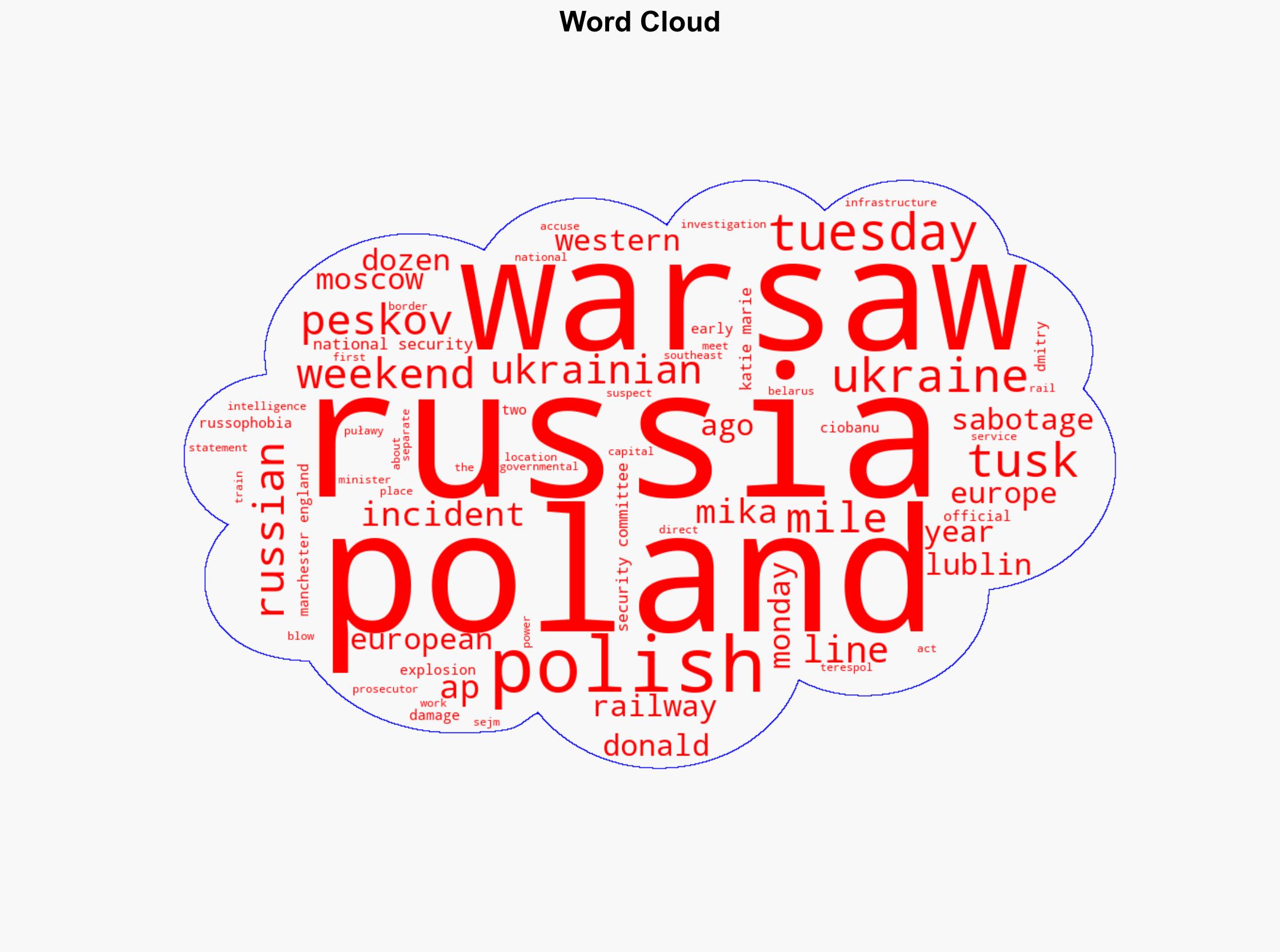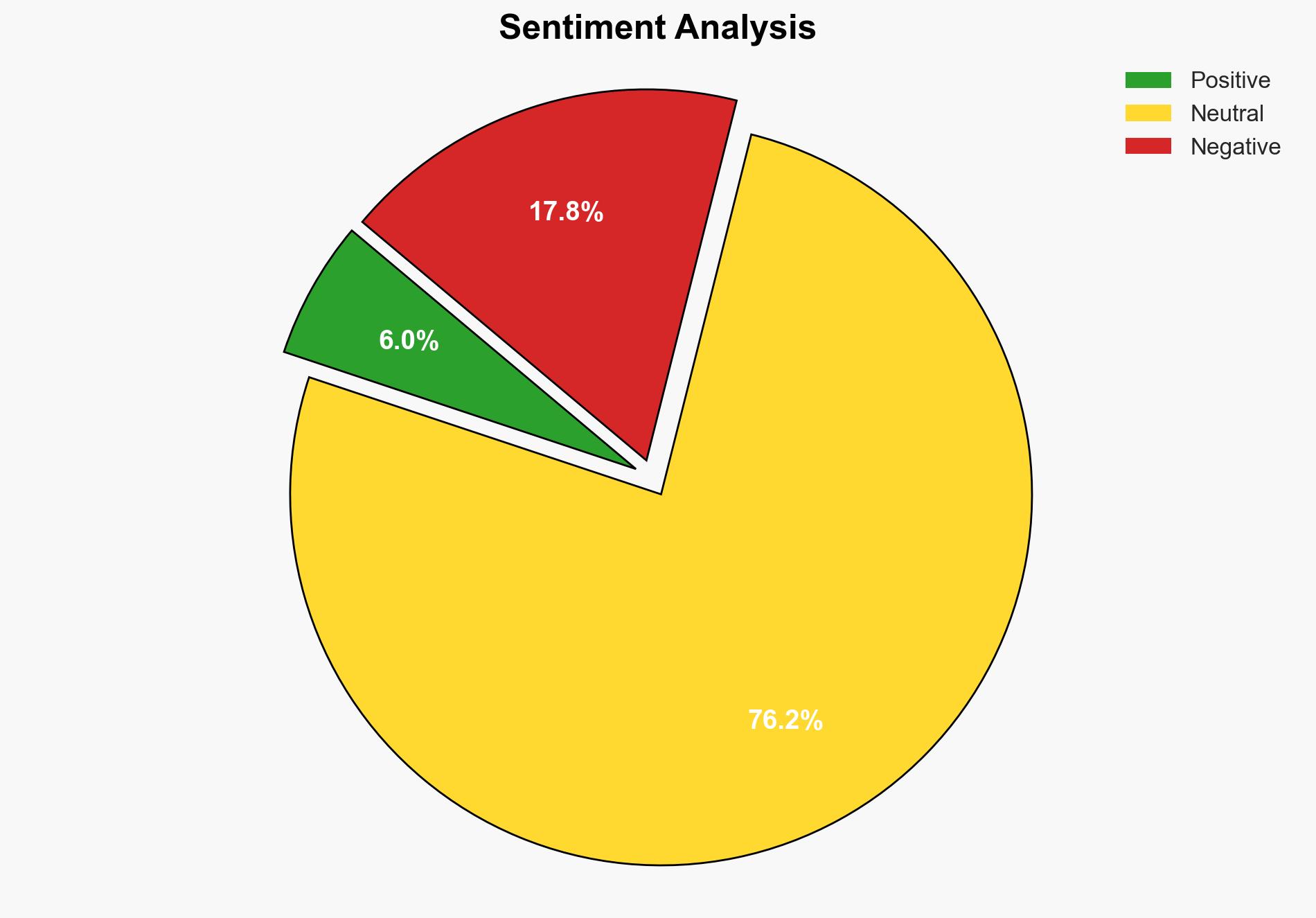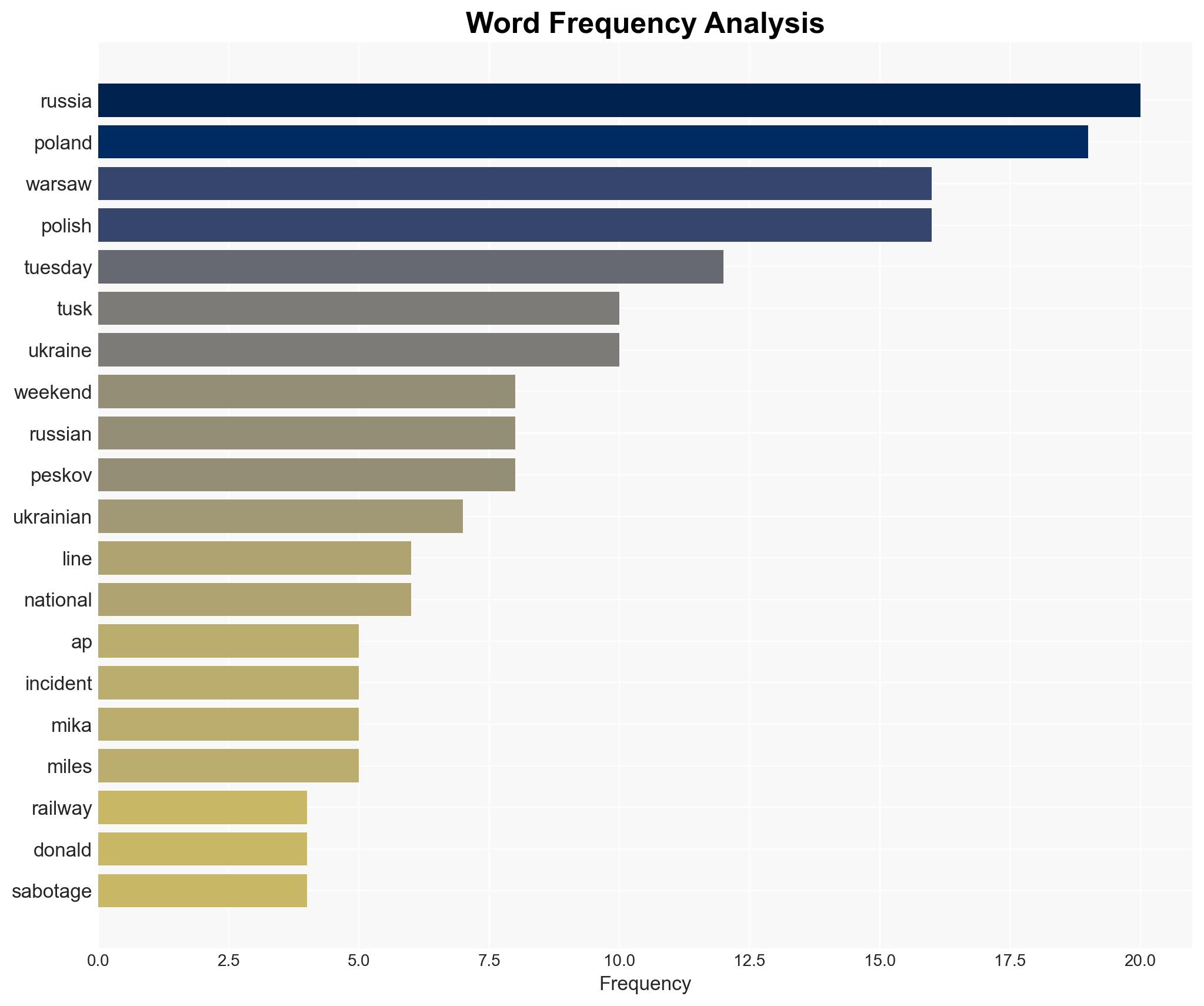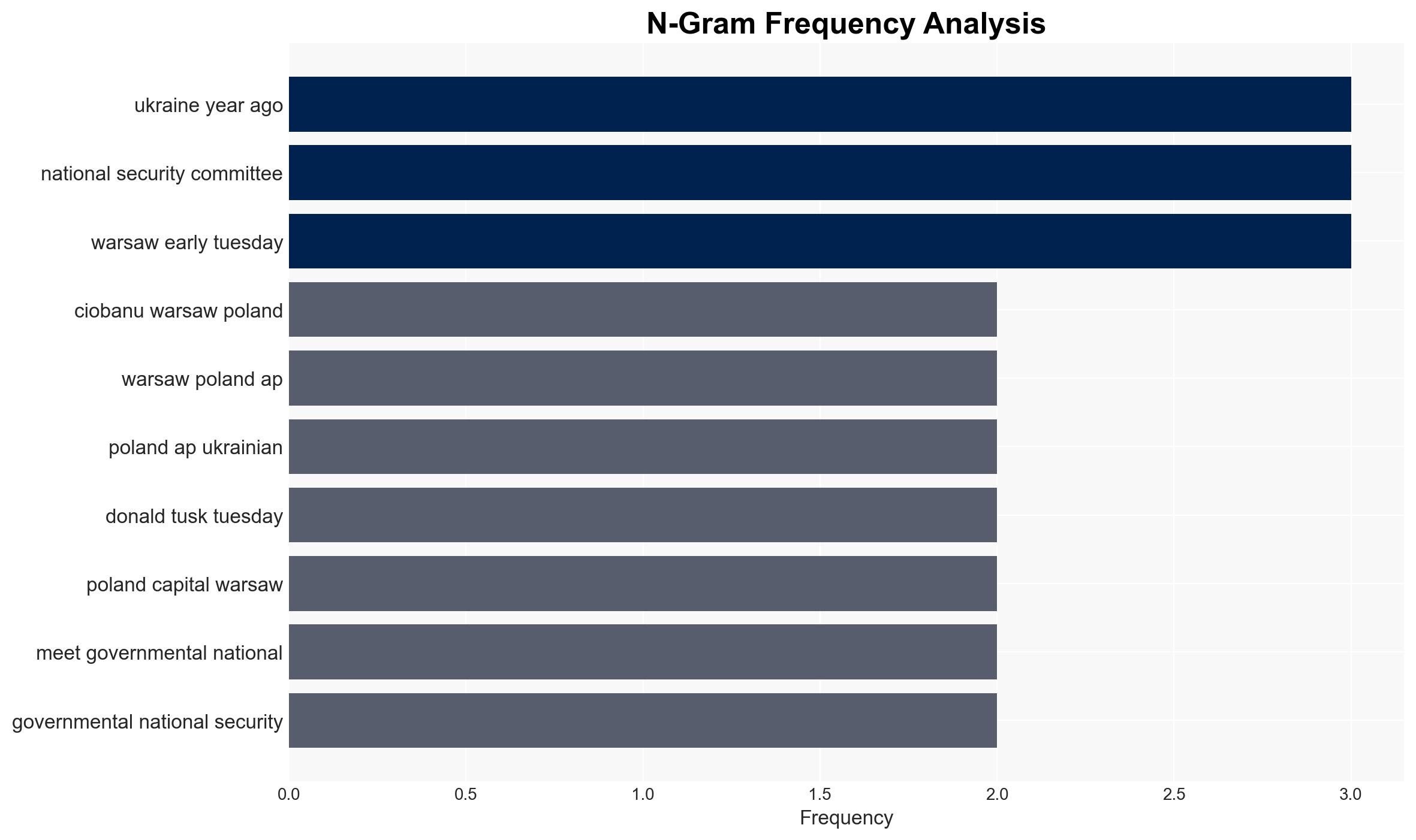Poland says 2 Ukrainians working for Russia are suspected in railway track blast – Boston Herald
Published on: 2025-11-18
AI-powered OSINT brief from verified open sources. Automated NLP signal extraction with human verification. See our Methodology and Why WorldWideWatchers.
Intelligence Report:
1. BLUF (Bottom Line Up Front)
With a moderate confidence level, the most supported hypothesis is that the railway track blast in Poland was a deliberate act of sabotage orchestrated by individuals working for Russian intelligence to destabilize Polish infrastructure and undermine European support for Ukraine. Recommended actions include enhancing security measures on critical infrastructure and increasing intelligence sharing among European allies.
2. Competing Hypotheses
Hypothesis 1: The railway track blast was a deliberate act of sabotage by Ukrainian nationals working for Russian intelligence to destabilize Polish infrastructure and undermine European support for Ukraine.
Hypothesis 2: The incident was an isolated act of vandalism or criminal activity unrelated to geopolitical tensions, possibly carried out by individuals with personal motives.
Hypothesis 1 is more likely due to the strategic nature of the target, the timing of the incident amidst heightened tensions, and historical patterns of Russian hybrid warfare tactics.
3. Key Assumptions and Red Flags
Assumptions include the belief that the individuals involved had direct links to Russian intelligence and that the act was intended to influence political dynamics. A red flag is the lack of publicly available evidence directly linking the suspects to Russian intelligence, which could indicate a potential deception or misdirection effort.
4. Implications and Strategic Risks
The incident could escalate geopolitical tensions between Russia and European nations, leading to increased security measures and potential retaliatory actions. There is a risk of further acts of sabotage targeting critical infrastructure, which could disrupt economic activities and public safety. Information warfare may intensify, with narratives aimed at sowing discord within Europe.
5. Recommendations and Outlook
- Enhance surveillance and security protocols on critical infrastructure, particularly in regions near geopolitical hotspots.
- Increase intelligence sharing and coordination among European allies to identify and mitigate potential threats.
- Best-case scenario: Strengthened European unity and resilience against hybrid threats.
- Worst-case scenario: Escalation of sabotage activities leading to significant economic and political instability.
- Most-likely scenario: Continued low-level hybrid warfare tactics by Russia, requiring sustained vigilance and cooperation among European nations.
6. Key Individuals and Entities
Donald Tusk (Polish Prime Minister), Dmitry Peskov (Russian Presidential Spokesperson), Ukrainian nationals suspected of sabotage.
7. Thematic Tags
Structured Analytic Techniques Applied
- Cognitive Bias Stress Test: Expose and correct potential biases in assessments through red-teaming and structured challenge.
- Bayesian Scenario Modeling: Use probabilistic forecasting for conflict trajectories or escalation likelihood.
- Network Influence Mapping: Map relationships between state and non-state actors for impact estimation.
Explore more:
National Security Threats Briefs ·
Daily Summary ·
Support us





